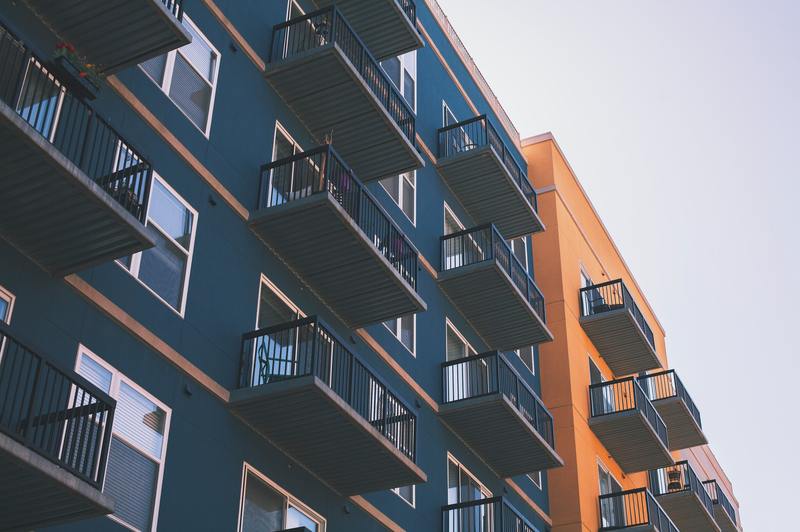A lot of people have been wondering what causes mold in apartments. Here we have compiled the things you need to know about mold in your apartment.
The perks of choosing to live in an apartment building are numerous. Yet, with so many people living in one space, mishaps might occur, resulting in the mold infestation.

A steady leak from a rooftop pool, for example, can cascade down many levels, resulting in a significant indoor mold infestation. Alternatively, a toilet or bathtub overflows in one apartment, causing water damage in the units below, notably if the flood is not swiftly managed.
Mold thrives in damp walls, ceilings, and floors. On the other hand, mold can cause significant structural damage as well as health problems and allergies.
How can you detect mold?
At some given moment, you’ve probably seen a piece of bread go moldy. Mold development in this condition usually appears as bright green spots that are simple to notice.
Nevertheless, a mold infestation in an apartment does not usually appear in this manner. In contrast, black mold is more likely to be found than green mold.
Mold typically shows as clumps of black dots on ceilings and walls, as well as underneath sinks. Mold growth can also appear as discolored surfaces, such as a part of your wall or ceiling that seems like it has been damaged by water and doesn’t match the rest.
Keep in mind that deadly mold isn’t always noticeable. You should suspect mold infestation if your apartment begins to smell nasty — especially like stale air.
Mold troubles could also be to fault if you suddenly start having health difficulties.
Common Causes Of Mold In Apartments
1. Defective kitchen tools and appliances
Amongst the most common causes of mold in apartment complexes is faulty kitchen appliances. Because the water supply lines are frequently buried, slow leaks from ice makers, refrigerators, and dishwashers go unreported.
It’s probably a huge nuisance when you notice there’s a problem, which is usually indicated by an odor or a stain.
2. Laundry rooms in the basement
There is a shared laundry room or washing facility in the basement of several buildings, which is fine. However, what’s also frequent are basement storage rooms containing cellulose-based boxes and other materials, which mold loves to grow on.
Mold can form in any basement due to the humidity caused by the laundry.
3. Defective plumbing and burst pipes
Pipe breaks are a building’s worst nightmare. It can pour down a thousand gallons of water the hallway and stairs, as well as the walls, floors, and ceilings.
A single pipe burst or plumbing leak can wreak havoc on dozens of apartments and public spaces.
4. Steam pipes
Steam pipes and aged radiators, especially in older buildings, frequently spring leaks behind the walls or ceilings that go undiscovered. Because steam leaks are often concealed, damage and mold development can go undetected for weeks or months.
A musty odor, on the other hand, indicates the presence of mold.
5. Pointing and building exteriors
Another way water seeps through is pointing, or the concrete mortar surrounding bricks and windows, typical in older apartment buildings. Rainwater can penetrate the structure from the side and become trapped in the outside walls due to deteriorated building components.
Mold develops from there, and by the time you notice something on your apartment wall, you can bet there’s a lot more on the other side.
6. Terrace drains
Drains get clogged by leaves and other garbage. When this happens, the only place for the water to travel is into an adjacent residence.
Water will find its way to the weakest entry point, which might be anywhere. It’s tough to tell without thorough testing, so if you have a terrace, make sure your drains are kept clean.
7. Silos and flat roofs
A flat roof is indeed a recipe for disaster. Flat roofs are typical in apartment buildings, although they can deteriorate and sag over time.
Furthermore, if they are not properly constructed, they will not shed water as well as they should. The water then seeps into the apartments below via the roof.
Water silos (water storage tanks) on rooftops that have also leaked or burst may result in severe flooding in the flats below.
What makes mold so dangerous?
Mold, if left untreated, can make you very sick. Even if you don’t see mold in your flat, spores can penetrate the air, causing symptoms that resemble allergies or a nasty cold: itchy, burning eyes, a congested nose, and wheezing.
Mold exposure can be more dangerous if you have a pre-existing condition like asthma or lung disease, which is why it’s critical to detect the indications of mold growth and address the problem as soon as possible.
You can check out this article on what can mold do to a baby and how to prevent mold around windows for additional precautions and mold solutions.
Conclusion
Mold is indeed a serious issue that should not be overlooked. If you suspect your flat has mold, intervene fast before your health suffers a serious setback.
Hopefully, we’ve given you all of the information you require to know what causes mold in apartments.
